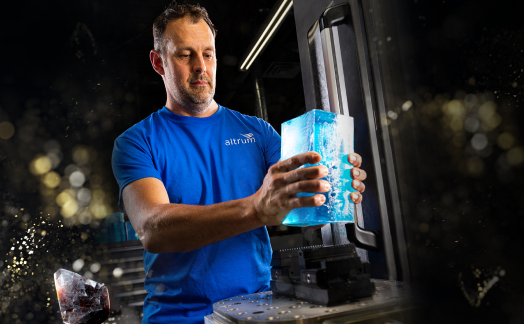6 Ideas to Promote your Employee’s Wellbeing
October 28, 2020, In Employee Engagement
Workplace stress – the monster under so many employees’ desk. We know that stress takes a physical and psychological toll on employees, did you know it also reduces productivity, drives up voluntary turnover, and costs US employers nearly $200 billion every year in healthcare costs1 ? That’s why so many companies are taking steps to counter the negative effects of stress and try to create a work environment that promotes wellbeing at work through a healthy, balanced lifestyle.
First, it’s important to know that there are 2 major factors that affect engagement and health in the workplace: job control—the amount of discretion employees have to determine what they do and how they do it, and social support – family and friends you can count on, as well as close relationships. Research has shown that when these 2 factors are present, stress, and the negative consequences of stress, decrease dramatically1. Hence, in each of our advice, you’ll notice it gives employees increased control over their schedule or work, and we try to play on group momentum to make the initiative successful!
Here are 6 creative and impactful employee wellbeing strategies that promote a healthy workplace and help foster a work environment with job control and social support.
Physical Health: Employee Wellbeing Initiatives
1. Exercise
It’s easy to think of our brains and bodies as separate entities when it comes to work. After all, it’s not likely you’d login to a meeting while in downward dog, tap dance during a presentation, or set the fiscal year budget during your spin class. However, exercise has a direct impact on how we perform and engage at work. Implementing an exercise initiative within your company can offer employees a sense of control over their day by reducing stress and, with the right coordination, can foster connections between team members.
Our advice: Organize fitness challenges
- Office step challenge – Simple, energizing and ideal for strengthening social bonds! All it takes to launch this program are tracking devices (smart watch/Fitbit/smartphone Health app) and a little structure. Things you’ll want to consider for a step challenge at work are:
- Length of the challenge (ex: 21 days)
- Team makeups – get creative with team names!
- Motivating targets (ex: 10,000 steps per day)
- How you’ll record and share progress (ex: the news feed of a social recognition platform)
- The prize! If your culture values social responsibility, you might consider donating to a charity as the reward.
- Lunchtime yoga – Have team members share their favorite yoga videos and pick a day of the week to try each one out virtually or in-person (observing safety guidelines). Challenge yourselves to a monthly or quarterly commitment, and reward all who complete the challenge with lunch or a special treat.
- Productivity dance breaks – Dancing can be a great way to get the blood pumping, increase focus and integrate fun into the workday. At various days during the week, challenge your team to set a 25-minute timer to focus on one single task. When the timer goes off, turn on a song and dance for 5 minutes. Check out Inbox Dance Party for a curated playlist and other tips. You can also try what Zapier does and host virtual dance parties on Friday to close out the workweek!
- Make it part of your recognition program – if your company has a social recognition platform and/or rewards and points program, consider creating a campaign based on fitness goals. Reinforce positive behavior’s and encourage exercise activities through peer recognition to strengthen social support.
Why we love it:
- Having a fitness heartbeat pumping throughout the work week can provide extra motivation and unlock creativity. Experiments show that the simple act of walking regularly promotes new connections between brain cells. 2
- Many experiments have shown that after or during exercise, even very mild exertion, people perform better on tests of memory and attention2.
- When a team unites around exercise goals, shares their progress and cheers each other on, new connections and energies are sparked.
Who does it best: Fitbit
You probably could have guessed that one! This fitness tracker magnate practices what they preach when it comes to wellbeing at work. In addition to using their own product through quarterly step challenges and helping other companies design wellness challenges, they offer “Workout Wednesdays” to their team. Since 2013, they’ve devoted this day to fitness and employees can drop into classes throughout the day when there is a break in their schedule. Both Fitbit and their clients see medical cost savings and reduced sick days in their companies.
2. Ergonomic (home) office
When we hear ergonomics – most people automatically think chairs. Not that we all wouldn’t love a Herman Miller, but ergonomics is far more than a comfy chair and a standing desk. This wellbeing at work instead of sitting at work!
Our advice: Give an ergonomic allowance
Nowadays, it’s difficult to imagine a life where employees will be at the office 100% of the time. To think of the best possible office setup may be an overkill since fewer people than before will enjoy the benefits. Instead, view office ergonomics as part of basic employee benefits. When you hire someone new, they get a budget to go towards a good, healthy work setup. That can mean a variety of things:
- New chair, footrest, wrist rest or mouse for their home office
- Laptop stand to work standing
- Sun lamp to boost vitamin D if they don’t have adequate lighting
- Fan or portable heater to be as comfortable as possible
- Car seat add-on if they have to drive a lot
- Custom fitted shoe soles for people who stand most of the day
Why we love it:
- An allowance works for everyone! Whether you’re home, in an office, on a factory floor, you can use this allowance to feel good at work.
- It allows employees to have control over how they work. We know that letting employees decide how they do their job is important, so let them choose what an ‘ergonomic office’ or ‘ergonomic environment’ should look like for them.
- It reduces the likelihood of employees being out of work or losing focus from repetitive body strain. Working 8+ hours in the wrong position can take a toll on upper and lower back muscles, triggering headaches and back pain. The right ergonomic setup clears the path for productivity, and the allowance lets person customize it for their specific needs!
Who does it best: Facebook
It’s no surprise a Tech company takes the prize here. The Silicon Valley giants have been at the forefront of ergonomic office design – and cool décor – since the early 2000’s. Facebook even has a person whose title is ‘human factor researcher’ – just to show how serious they are about their employee’s wellbeing at work! At Facebook, their philosophy involves 4 pillars: the first pillar involves using data to communicate the ergonomic challenges a company is facing. Then data is needed to track improvements over time (the second pillar) and across populations (the third pillar). The final pillar is shifting your company’s approach to ergonomics from reactive to proactive. A lot of companies wait to address ergonomic issues until there are complaints, but if you’re proactive about adjusting, user discomfort and injuries can be entirely avoided.
3. Eating healthy at work
Let’s be honest, healthy food is inconvenient. It usually doesn’t fit well inside a vending machine, and it’s much cheaper to have a caterer bring muffins and coffee to the company meeting rather than omelet’s and freshly pressed green juices. However, we’re modern, caring, and smart companies, are we not? We don’t stop at inconvenient!
Our advice: Weekly family-style healthy lunch at work
Sure, some companies like LinkedIn feed their employees daily with free breakfast, lunch, dinner and snacks. If you have the means to do so, fantastic! If you want to start small, make a weekly schedule of different healthy meals, and have employees cook it together. You can even use the help of a dietician to put together the menus, and all you have to do is purchase groceries. You can work with the space and equipment available to you – not all meals have to be put in an oven! Host it on a Thursday so that people can have the leftovers on Friday.
Why we love it:
- It teaches people how to prepare a healthy meal. Your employees will be able to recreate your meals at home after for their family and friends!
- Cooking together builds camaraderie and strengthens the bond between employees. It’s a great way to promote social support and wellbeing at your firm.
- A weekly get together isn’t too cumbersome for employees. If they have client lunches or pressing deadlines to meet, they can arrange their schedule to make it work.
- If you are based in a larger city, you are still giving employees the option to go try exotic foods and new restaurants 4 days a week. It’s fun for them, and good for your local economy.
Who does it best: Kickstarter
Kickstarter’s Manhattan office has the typical tech startup vibe. It’s a large space, with many amenities that employees can use during the day. One thing that employees love is the Thursday family-style lunch. They cook together in the common cafeteria, and there seems to always be a fun theme – thanksgiving and pre-holiday meals appear particularly delicious! Kickstarter even has an urban garden on their rooftop where they grow their own veggies, which they can use in their meal preparation. How fun!
Bonus points: For business travels (if and when this is a thing again!) tell your employees about the healthy options at the airports they’ll be visiting. Airports are not known for their gastronomy, but some companies like Fly with Breeze are changing the game and bringing healthy food to hungry passengers.
Psychological Health: Strategies for managing stress in the workplace
4. Gratitude and recognition to improve wellbeing at work
Studies by Berkeley University show that grateful employees are more concerned about social responsibility. Grateful employees—as well as employees who receive more gratitude—also perform more “organizational citizenship” behavior’s: kind acts that aren’t part of their job description, like welcoming new employees and filling in for coworkers. Creating such a culture plays a huge part in fostering social support within your company. All this sure sounds logical and easy. So why do so few employees feel like they get enough recognition? Here are some strategies to ace gratitude and recognition at work!
Our advice: Weave recognition into your culture, from top to bottom
Start with management. It’s so important that your management and executive teams lead by example and become recognition ambassadors. Recognition is a soft skill that can be learned, consider the Orange Program to groom your leaders, or promote relevant podcasts internally like the Csuite podcast!
Equally importantly, make sure employees have a platform to recognize each other. With so many of us working from different offices, different floors or from home, make it easy to say ‘thank you’ from anywhere. Social recognition platforms like Celebration are a great way to spread gratitude and keep a climate of solidarity regardless of your office situation.
Why we love it:
- It promotes a healthy, positive, boss-employee relationship.
- These are web-based solutions – therefore they’re applicable regardless of the geographical makeup of your company.
- It’s inclusive and spreads good vibes all over!
Who does it best: Hilton
Amongst the companies with the best perks, Hilton undoubtedly ranks high (especially for travel discounts!). The company’s benefit page is extensive, and their formal recognition and gratitude program is one of the best we’ve seen. They use social recognition internally to allow employees to recognize each other for the work that not everyone in the company can see, and make their outstanding employees shine internationally though the CEO Light & Warmth Awards. What a beautiful, engaging culture to be a part of!
5. Normalizing psychological health talks
Perseverance, grit and getting it done despite all odds…those are qualities we often champion at work. And for obvious reasons. But what if the ability to be honest and open about our mental states was also a tool for success? People often suffer in silence for fear of judgement, perceived weakness or the feeling that no one will relate or understand. According to Statistics Canada, 1 in 5 Canadians will suffer from mental illness in their lifetime and exhibit signs of psychological distress: changes in time management, frequent absences, decreased motivation, irritability, fatigue/lack of concentration, isolation and changes in hygiene. Making mental health a safe topic of discussion at work increases trust and openness between employees and can be a game-changer for wellbeing and your culture in general.
Our advice: Put mental health on the agenda
- Share mental health resources and support: If you have a routine company meeting or town hall, ask a senior leader and/or HR to share these resources publicly. Include mental health materials and language in your onboarding materials and management training.
- Organize a meditation practice: Just as you would for a physical challenge, try organizing a 7-day meditation initiative or bring together a group of people for “Meditation Mondays”.
- Hold small group discussions: Not everyone feels comfortable airing out their inner life en mass, but small groups of trusted colleagues can be a safer entry point into sharing tougher experiences. Consider hosting a small roundtable to talk about current challenges. Lead by example by being vulnerable about your own experience and establish the psychological safety for others to follow suit.
- Practice compassion and empathy: Knowing how to empathize and understand each other’s reality can be one of our most important ways to connect. While we often want to “fix” someone’s pain, simply being “with” someone through their struggle is often the best tool for social support. Don’t overlook the empathy and compassion we must practice with ourselves as well!
- Offer flexible work schedules: Give people the opportunity for better work-life balance as well as the opportunity to seek the care they may need. In the same way you would accommodate a doctor’s visit, allow flexibility in employee’s schedule for therapy visits or other avenues of mental care and support.
- Request support from behavioral & mental health companies: that offer digital programs for conditions like depression, anxiety disorders, and addiction for your employees.
Why it matters:
- A work environment that supports and promotes mental wellness can mean higher engagement and productivity, increased loyalty, reduced absenteeism and a more respectful workplace culture.
- Sharing tools to combat anxiety and stress, better equips us to take control of our day and be more focused in our work.
Meditation apps we love:
- Headspace
- Calm
- Insight Timer (free!)
- Smiling Mind (free!)
- Aura
- Journey Meditation
6. Staying connected (especially remotely)
Building a connected workplace requires effort – whether you’re in an office or remote. Working remotely can be a challenge when it comes to workplace culture, especially when you layer in a global pandemic. Feelings of loneliness are heightened, which has an obvious effect on engagement and how we show up to work. Maintaining social connection is critical to our mental wellbeing and can also improve the quality of our contributions.
Our advice: Reimagine your work interactions
- Humanize your meetings: We’ve all got limited time to get a lot done. However, under pressure, it’s easy to let our to-do list to take precedence over being human, adding to feelings of isolation. Routine meetings are opportunities to build social connection. Instead of plowing through numbers and metrics, try parsing out time to be…well, people! Spend agenda time to share ideas, apart from task updates. Create breakout groups for your team to answer a thoughtful prompt for 5-10 minutes. Turbo charge problem-solving abilities by assigning people different perspectives to a challenge you’re working through. Play a game where you must say “yes and…” to every idea put forward. This helps build connection, fosters engagement, and puts people into a creative mindset.
- Grab a buddy for your morning routine: Whether it’s coffee and a crossword or taking a walk around the block, consider inviting a coworker into your morning ritual. Many of us have gained time by not having to commute, so why not use that time for social interaction? Sip on your latte with a teammate over Zoom! If you head to an office, grab a work friend and take a walk to start off the day.
- Create themed chat channels: Books, movies, hobbies, recipes, music…anything can work! Starting a Teams group or Slack channel around a topic provides a place for employees to bond around things unrelated to work. Take it a step further and host a book club or an 80’s movie night watch party!
- Work over video hangouts: If you’re remote and missing the office buzz, try setting aside an hour a day or week for your team to turn on videos and mics. Keep working like you would in the office while knowing your colleagues are right there “beside” you. Don’t discount the potential for laughs here! The home office brings lots of new material…like pets with no spatial boundaries…
- Schedule time to connect: Even though it may require extra effort in a remote world, having social time built into your day with people that make you happy is critical! Positivity3 is one of the 3 pillars of work friendships, the more positive interactions we have throughout our day, the more connected and bonded we feel to our colleagues.
Why we love it:
- Carving out time to be social helps to create balance and build a system of support. It reminds us that we can be on our own but are never truly alone.
- By asking people to look at a situation from a new perspective or explore creative solutions, you not only increase engagement but also set the stage for innovation!
- By providing space for people to contribute their thoughts and ideas, we make them feel seen and heard.
- When you empower your team, they feel more in control of their jobs and their future.
Podcasts we love:
HBR IdeaCast covers a wide range of relevant workplace topics; one episode in particular tackles the importance of work friendships. In episode 755, Why Work Friends are Worth it, author and friendship expert Shasta Nelson breaks down the 3 pillars of friendship – consistency, vulnerability and positivity – and how to intentionally cultivate each factor to increase engagement and connection at work. The information shared in this 27-minute relationship treasure chest will give plenty of insight on acing that contentious Gallup Q12 question “I have a best friend at work.”
Health & Wellbeing at work…in your company
We hope this list helped you get some ideas to promote wellbeing at work at your own company! Do you have any cool employee wellbeing strategies that your team loved? If so, we’d love to hear from you!
Sources:








